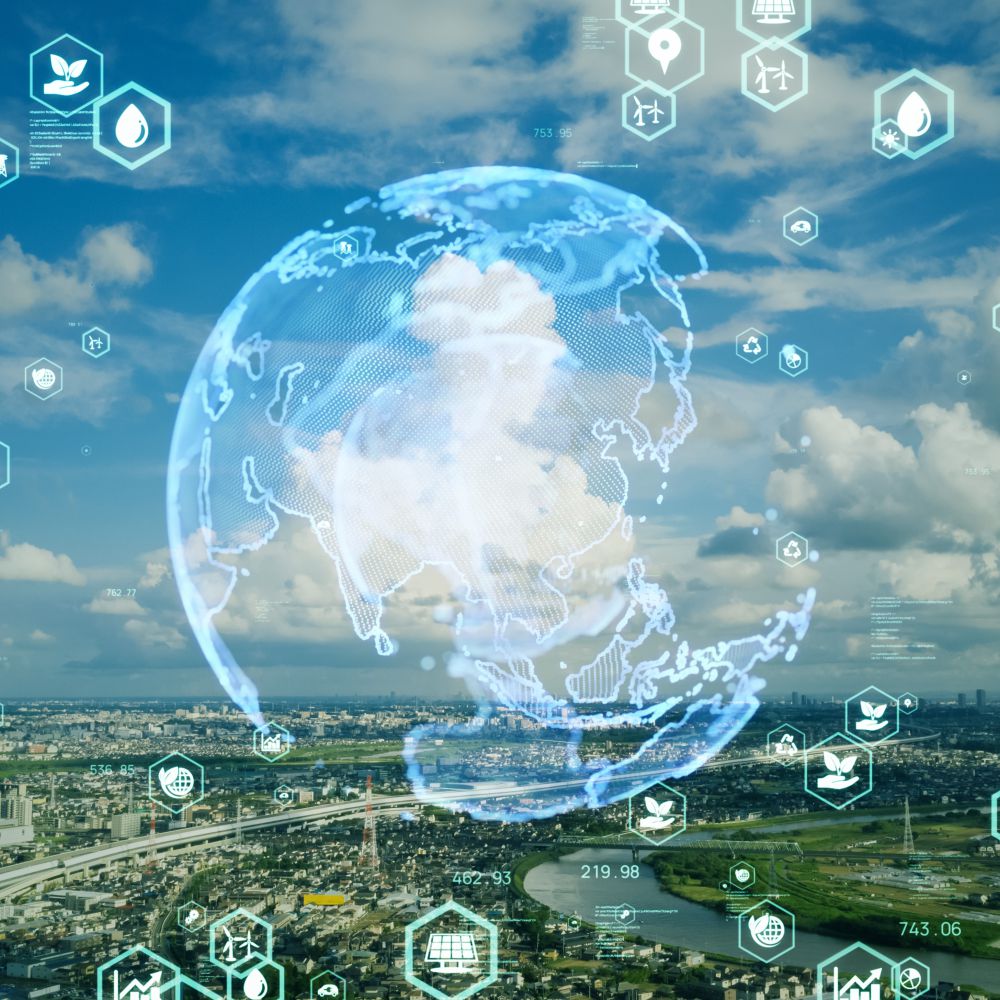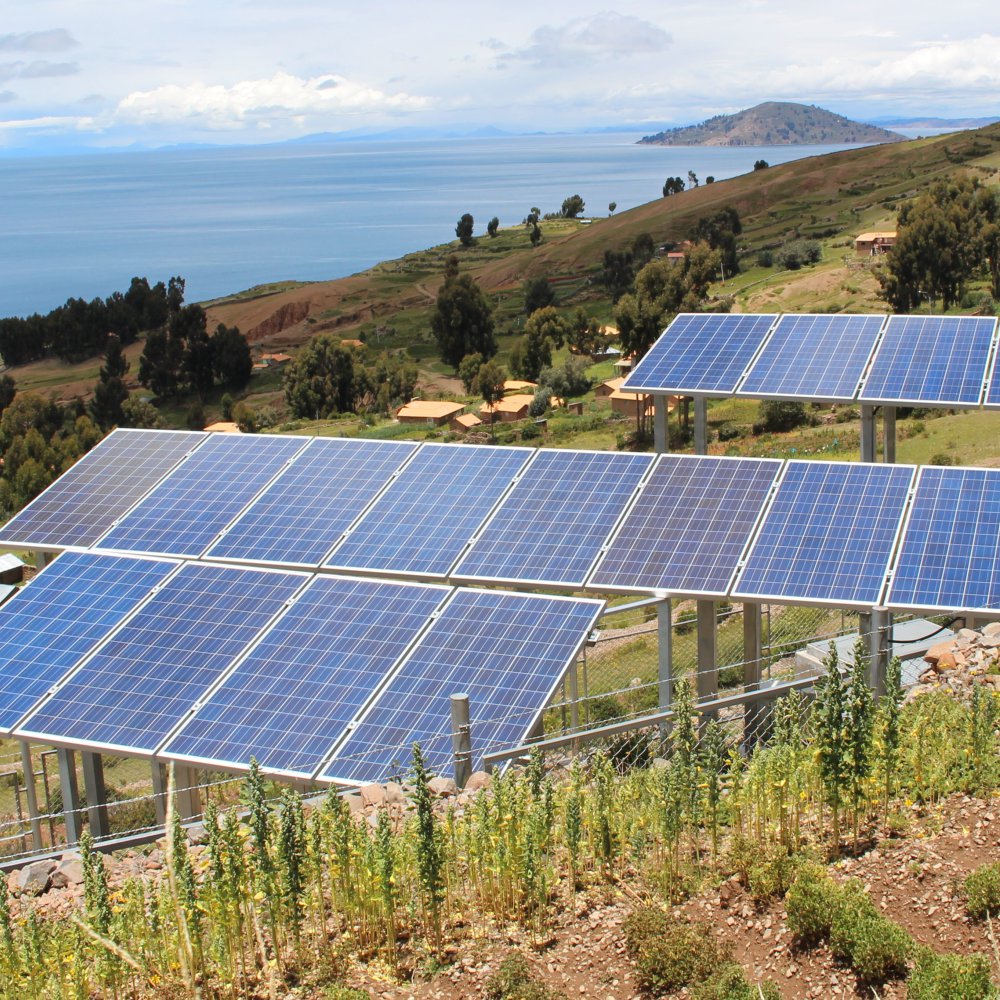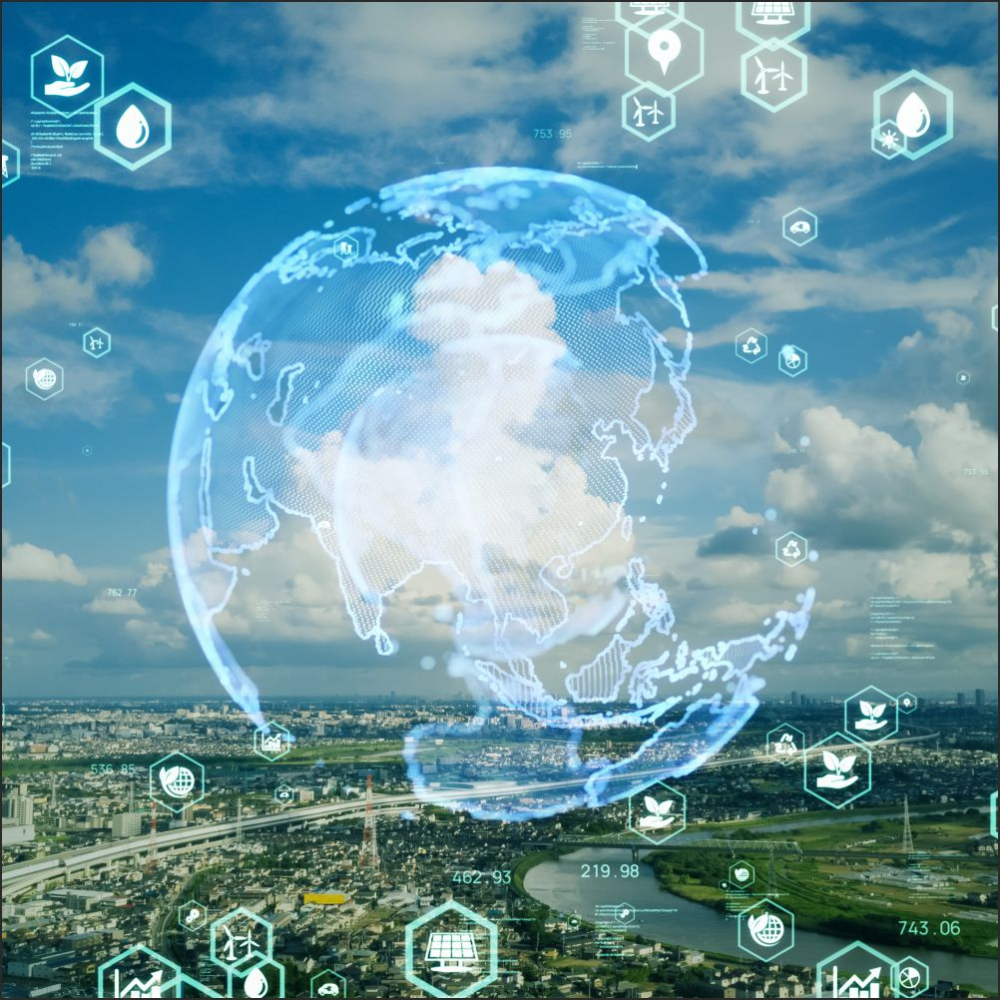This compiled article showcases some companies who are driving 'Net Zero' goals passionately, with special focus on SCOPE - 3.
An interesting insight from McKinsey rightly points out that Scopes 1 and 2 emissions tend to be top of mind for organizations looking to reduce their carbon footprints. These cover company-owned and -controlled resources and indirect emissions from energy generation. Yet taking a strategic approach to addressing Scope 3 emissions (indirect emissions that arise across the value chain) often represents the bigger challenge.
The WEF joint study also highlighted that Scope 3 upstream emissions are an emission hotspot for many companies and on average ~11.4 times greater than operational emissions. Yet, these emissions are notoriously difficult to tackle as they expand beyond a company’s direct CO2 emissions, as one company alone can have more than thousands of suppliers. To tackle scope 3 emissions, upstream collaboration with suppliers – at scale – is needed.
Across industries, supply chain management decarbonization targets have seen a rapid rise in recent years. However, supply chain decarbonization is challenging. In a recent survey of 230 organizations, carried out by SBTi and BCG, 50% of respondents self-reported being “off track” to deliver on their scope 3 target despite 40% of all respondents indicating that executives are directly accountable for the decarbonization work.
To follow through on the supply chain decarbonization targets, corporations must come together with suppliers and collaborate at scale, as emissions often sit upstream in their value chains.
To succeed, corporations and their procurement teams need to apply a systematic and structured approach to supplier engagement following three consecutive steps:
STEP 1: IDENTIFY AND PRIORITIZE SUPPLIERS
First, corporations must understand the emission profiles of its supplier base to identify and prioritize suppliers with the biggest impact on scope 3 upstream emissions. In addition, supplier emissions should be analysed at a category level, as different categories will face different decarbonization challenges and must be addressed with tailored levers. The category level analysis enables a like-for-like comparison of suppliers based on their carbon footprint.
STEP 2: LAUNCH THE SUPPLIER ASK
The second step is to define the supplier engagement journey and launch the supplier ask to kick-start their decarbonization work. Suppliers will have different sustainability maturity levels and therefore it is important to envision the supply chain decarbonization as a journey towards a “North Star” along which suppliers evolve, rather than an immediately achievable target. Once the “North Star” is set, progress towards it must be reversed engineered and communicated to the supplier in the supplier ask.
STEP 3: ENGAGE AND SUPPORT SUPPLIERS
As the final and most important step, corporates must align supplier incentives, develop support programmes, and monitor progress towards the “North Star”. To facilitate true change, continuous supplier engagement and support are paramount. Supply chain decarbonization is not straightforward and cannot be done using siloed thinking. Yet, it is feasible through a structured approach, building on supplier collaboration at scale, with successful companies reaping the benefits of significant emission reductions and closer supplier relations.
COMPANIES LEADING THE CHANGE
Tata Group
As visionary as it may sound, more than a century before the conversation around climate change became mainstream, Jamsetji Tata knew that sustainability was key to business. His vision of sustainability was documented in his letters related to the starting of new industries. Jamsetji was also one of the early proponents of using clean energy to power industry. As early as 1875 he contemplated harnessing the power of water to generate clean, renewable energy that would be available to “run the tramways of Bombay, to supply as much electric lighting as may be required in Bombay, and to have a balance over for the supply of power to a few cotton mills, and sufficient for small local industries.” The Founder’s vision has served as the north star of the generations that followed. JRD Tata’s famous attention to detail extended even to the green cover at Tata companies and institutes.
Carrying the legacy ahead, “Driving momentum towards a sustainable future is a big priority… I think sustainability is the biggest challenge for humankind for the next decades to come, and we definitely need to address this,” asserted N Chandrasekaran, Chairman, Tata Sons.
Standing firm on this foundation, the Tata Group is now poised to embrace the future of the planet with Aalingana. It has been launched with sustainability commitments from seven companies — Tata Steel, Tata Power, Tata Motors, Jaguar Land Rover, Tata Chemicals, Tata Consultancy Services and Tata Consumer Products. In FY20, these companies made up 99.5% of the group’s Scope 1 and Scope 2 emissions, 94% of freshwater use and 99.4% of solid waste.
Collaboratively developed with group companies, Aalingana is focused on three interconnected pillars: driving the decarbonisation of its businesses and value chain; applying a systemic, circular economy approach to reduce resource-use and waste; and preserving and restoring the natural environment. It commits to embedding sustainability right into their business strategy.
“With Aalingana, we are building a ‘One Tata’ platform to maximise the impact we can have on markets, communities, and the value-chain,” stated Roopa Purushothaman, Chief Economist and Head of Policy Advocacy, Tata Sons. This green transition, she believes, is the next big opportunity, akin to what digital has been in recent decades: “Sectors like automotive, financial services and energy are being fundamentally transformed. At the same time, there are risks from not embracing change fast enough. Fundamental business sense, a long-term focus, government incentives, and customer as well as employee demand for change are all enabling a structural shift.”
Philips
In its pursuit to reduce carbon emissions, Robert Metzke, Global Head of Sustainability, stressed as to how Philips has continued to make steps to embed sustainability and climate action in healthcare delivery. With its Scope 1 (internal) and Scope 2 (energy sourcing) emissions firmly under control, the company has turned its sights on partnering to reduce its Scope 3 emissions – those beyond its direct control – to ensure end-to-end value chain sustainability. In early 2023, Philips became the first health technology company to have its entire value-chain CO? emissions reduction targets approved by the Science Based Targets initiative (SBTi). In healthcare, the main share of carbon emissions (71%) are indirect emissions caused by the production and transportation of goods and services that hospitals purchase, such as medicines, food, equipment, clothing, and waste treatment. Reducing these is a big opportunity. The good news is that suppliers are also focused on this topic, where increasingly a combination of legislation, transparency, reporting pressure, and employees who prefer to work for sustainable companies is driving change. The critical part is the capability to act. Philips builds capabilities with its customer and suppliers, providing very practical help.
Airbus
In line with its purpose to pioneer sustainable aerospace for a safe and united world and with its ambition to play a leading role in the decarbonisation of the aviation sector, Airbus extended its greenhouse gas reporting to include CO2 emissions produced by its commercial aircraft during their operating phase – also known as “Scope 3 - Use of sold products” emissions as part of the Greenhouse Gas Protocol.
By taking this significant step, Airbus became the first aircraft manufacturer to report on the emissions generated by its products during their entire lifecycle. Airbus has committed to reducing by 46% the greenhouse gas emissions intensity generated by its commercial aircraft in service (Scope 3 - Use of Sold Product) by 2035. This near-term target has been validated by the Science Based Targets initiative (SBTi) in early 2023.
Climate change is affecting water availability and accelerating biodiversity loss, with many communities already suffering. Solutions to the climate crisis must factor in human rights and benefit everyone by creating a more equitable, low-carbon economy.
Nestlé
On this note, Nestlé officials highlighted, “Only 5% of our total greenhouse gases (GHGs) come from our own operations. In contrast, 95% come from our value chain, from activities like farming or shipping. That’s why we’re working with partners throughout our supply chain and transforming our manufacturing and packaging activities to help achieve absolute reductions in GHG emissions. As a result of scaling up GHG reduction projects in our operations and supply chain management , we have put peak carbon behind us, reducing absolute GHG emissions year-on-year even as our company continues to grow.”
“To achieve net zero emissions, we need to reduce emissions throughout our business and supply chains. Our progress towards sourcing 50% of our key ingredients through regenerative agriculture methods by 2030 will contribute significantly to our emissions reductions, as will investing in sustainable logistics, packaging, and manufacturing activities. Our Net Zero Roadmap also includes carbon removals. As a company with a large land ‘footprint’, natural climate solutions will form a significant part of our decarbonization pathway, removing carbon from the atmosphere from within our supply chain, the official releases stated.
Hindustan Unilever Limited (HUL)
Hindustan Unilever Limited (HUL) is on track to achieve Unilever’s global target of cutting greenhouse gas emissions from its operations (known as scope 1 and 2 emissions) by 100% by 2030 (against a 2015 baseline). However, these are a small proportion of its overall emissions. The bigger part – the so-called scope 3 emissions – are those associated with the production of the raw materials and ingredients the company purchases from its suppliers.
These emissions are much more difficult to tackle because they require progress of entire, often global, supply chains. “As such, to reach our net zero target, we must work with our suppliers to help them take action within their own operations and value chains,” the official highlighted.
For HUL, almost 60% of its greenhouse gas (GHG) impact comes from the raw materials and ingredients the company buys to make products. In its Home Care business, which relies heavily on chemicals, this is closer to 80%. That’s why, with a commitment to achieve net zero emissions across our value chain by 2039, it is working with supplier partners to radically reduce our GHG impact across the value chain.
HUL is collaborating with leading chemical companies TFL and Fertiglobe (the strategic partnership between OCI Global and ADNOC), to pilot the production of near-zero emissions synthetic soda ash – a key ingredient in laundry powder. There are three elements to this pilot. The soda ash is made with some of the first green ammonia produced using green hydrogen from renewable energy. The boilers used to make the soda ash have been shifted from coal to renewable energy (cashew kernels). And the CO2 produced by the boilers is captured and used in the manufacturing process, replacing CO2 that would otherwise have to be procured. The combination of these three elements results in the production of soda ash with a near-zero GHG footprint. The pilot will help make enough ‘near-zero’ soda ash for about 6,000 tonnes of laundry powder.
Beyond the pilot, the company has also signed an agreement with TFL to supply us with low GHG soda ash made with renewable energy and CO2 capture and use, reducing GHG emissions by more than 60%. “The pilot addresses greenhouse gas emissions at every stage of the product’s (soda ash) manufacture and we believe it is a world first,” says Deepak Subramanian, Home Care General Manager, Unilever, South Asia. “Doing this while delighting consumers with great, affordable products is at the heart of our strategy.”
This collaboration between Unilever and the chemicals sector is an example of how we’re bringing different parties in our supply chain together to achieve our net zero ambition while, at the same time, delivering benefits for our partners.
PepsiCo
In 2022, PepsiCo’s total GHG emissions across Scopes 1, 2, and 3 were approximately 61 million metric tons, which represents a 4% increase from its 2015 baseline, with Scope 3 emissions being approx. 57 million metric tons, up approximately 7%. Much of its carbon footprint (93%) comes from the value chain, or Scope 3 emissions, particularly these three categories: agriculture (34%), packaging (26%) and third-party transportation and distribution (18%).
PepsiCo’s efforts to reduce value chain emissions focus on three largest emissions drivers: Agriculture, Packaging and third-party transportation and distribution. Combined, these three sources accounted for 78% of our global GHG emissions in 2022, and meeting net-zero goal requires that the company moves quickly and significantly on these in collaboration with its upstream and downstream partners from whom these emissions originate.
“Our agriculture climate strategy goes together with our sustainable agriculture goals. Our preferred practices are those that lead to better yields, improved soil health, lower deforestation and productivity for farmers and lead to GHG emission reductions. We are therefore focusing on sustainably sourcing key ingredients like palm oil and cane sugar, as well as collaborating with suppliers, peers, and other stakeholders to implement and influence better on-farm practices. Additionally, we are engaging our key agricultural suppliers to increase the use of renewable electricity and fuels to reduce the GHG footprint in agricultural processing,” highlighted the company statement.
Packaging is another aspect of the company’s pep+ ambition with a clear link to climate goals. To reduce packaging impact, the company is focusing on incorporating more recycled content and striving to make packaging recyclable, compostable, biodegradable, or reusable. “We are also reducing the weight of packaging material, introducing alternative material, and exploring alternative business models that eliminate or significantly reduce packaging. We have established a new goal that 20% of all beverage’s servings will be sold through reusable models by 2030. Furthermore, we are engaging our key packaging suppliers to accelerate the adoption of clean energy solutions to reduce the GHG emissions of packaging materials,” mentioned the company report.
Within third-party transportation and distribution, the company aims to improve the efficiency and carbon intensity of the non-PepsiCo fleet that delivers products to customers. By mapping and quantifying baseline emissions from third-party carriers and engaging with carriers, the U.S. EPA’s Smartway program and industry alliances like the Smart Freight Buyers Alliance (SFBA), we are identifying opportunities for improvement within our carrier base. These include working with our carriers to adopt efficiency measures, use sustainable biofuels and transition to zero-emissions vehicles such as electric vans and trucks.
Underpinning these focus areas is supplier engagement. “We continue to make progress in building internal alignment and a framework for engaging with our upstream suppliers. A portion of our Scope 3 emissions lie within our direct tier 1 suppliers’ operations. Within these, improvements in operational efficiencies and use of renewable energy are expected to lead to a reduction in our Scope 3 emissions. We also partner closely with our tier 1 suppliers to address the further upstream emissions, whether on-farm or in raw material extraction. Such collaborations are expected to lead to a reduction in Scope 3 emissions not only for PepsiCo, but also for our suppliers,” added the company report.
In addition to these focus areas, the company is also trying to address emissions through additional initiatives:
- Engaging third-party manufacturers to bring them along on Pepiso’s climate action journey. The company’s third-party manufacturers include franchise bottlers, non-controlled joint ventures, co-manufacturers and co-packers. Improving their operational efficiency will also have an impact on PepsiCo’s Scope 3 emissions.
- Continuing Sustainable from the Start, an environmental sustainability impact assessment program for its product development process. The program includes a toolkit and business processes that help to build the capability within our various functions involved in product innovation to understand the environmental and climate impacts of product design and to make sustainable choices. In doing so, they are supporting our strategic, long-term vision to decouple our business from fossil fuels. To learn more, see Sustainable product design.
As businesses and their supply chains embrace their vital role, Scope 3 emissions – often representing the vast majority of a company’s total carbon footprint – will be a key focus area. Businesses that prioritise the tracking, data quality and reporting of Scope 3 emissions stand to ensure compliance against the new requirements, improve transparency, credibility, and demonstrate a commitment to business-driven sustainability and climate risk mitigation to stakeholders and investors, asserted a study by LRQA.
As an interesting PwC study aptly mentioned, “Forward-looking organizations will read the writing on the wall and start developing the capabilities and expertise they’ll need to measure— and manage—their Scope 3 emissions. By adopting an incremental approach to data collection, organisations can begin making meaningful progress now— before it’s too late.”

Categories

Magazine Editions






















